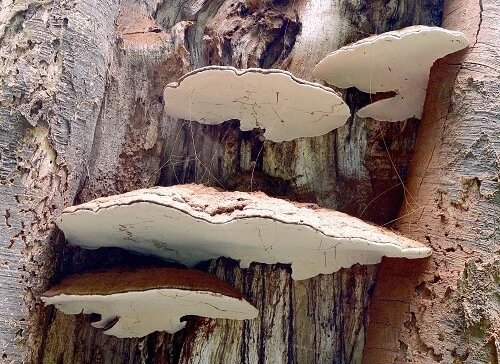
Copper Beech tree
A spectacular tree that puts on a colourful show every year.
Copper Beech leaf
When this tree is in leaf, it is one of the easiest to identify in the cemetery. Its dark red leaves look particularly beautiful when lit by the summer sun, and they turn glorious shades of yellow and orange in autumn. That’s why copper beeches are such popular trees for parks and gardens.


Bracket fungi on the Copper Beech in the cemetery
Brompton’s copper beech is probably about the same age as the cemetery, which opened in 1840. It has become an important feature in the cemetery landscape, so the tree team is looking after it carefully.
The team carefully monitors the impact of the bracket fungi that grow on the trunk, as they are very slowly rotting the tree. The decaying wood is an important habitat for wildlife, so it’s valuable to have both the tree and the fungi in the cemetery. However, the tree is weakened as a result, and is vulnerable to damage during strong winds. This means occasionally cutting back the tree’s canopy to help protect it. It’s surviving very well so far!

The copper beech produces distinctive triangular nuts in autumn, usually found in pairs in spiny cases. The nuts are known as ‘beechmast’ and were traditionally used as food for pigs. Beech burns well, and is the preferred wood for smoking herrings.